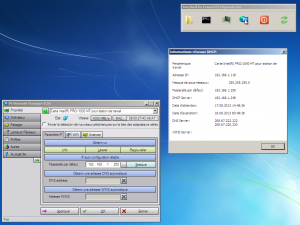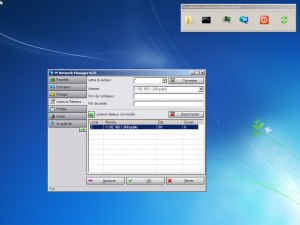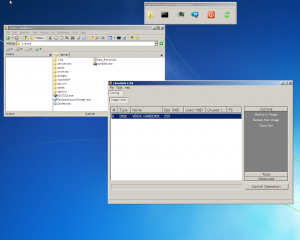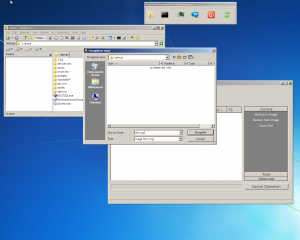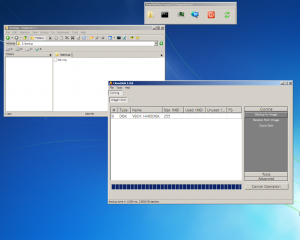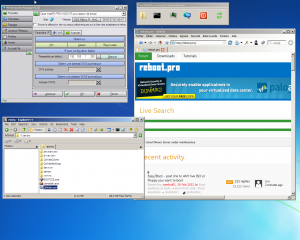Here below the different steps to backup or clone a (physical or logical) disk (hosting any operating system) using WinPE and CloneDisk.
1.Getting tools
First, lets get the needed files and prepare our working folder :
QuickPE and unzip it to x:\quickpe.
CloneDisk and unzip it to x:\quickpe\extra
2.Preparing
Now, lets prepare our WinPE iso
Generate your WinPE iso using any of the option that suit you best : use WAIK or ADK or your sytem WinRE or a DVD or an ISO …
3.Booting
At this point, you have an iso file in x:\quickpe\x86 named winxx.iso.
you can either burn it to cd/dvd (easiest path),
« burn » to a usb stick with rufus
or (more complex) boot it thru pxe (using these guides).
4.Networking
This step is needed only if you intend to backup your drive to an image file over a network drive.
Once booted, ensure you have a correct network setup using PeNetwork : click on the info button.
Provided, you have a network connectivity, then map a network drive, still using PeNetwork.
5.Backuping
Now, launch clonedisk from x:\extra folder, choose your source drive and either back it up to your network drive or clone your source drive to a new target drive.
